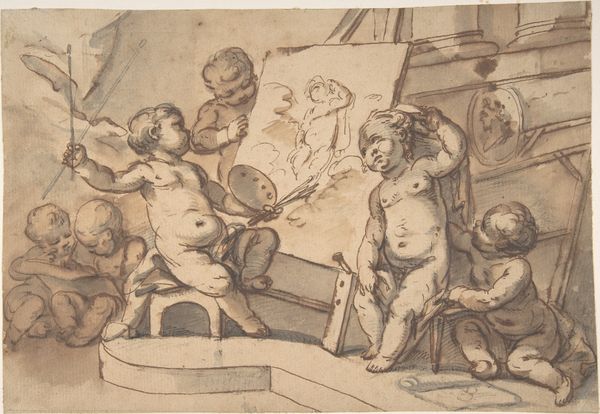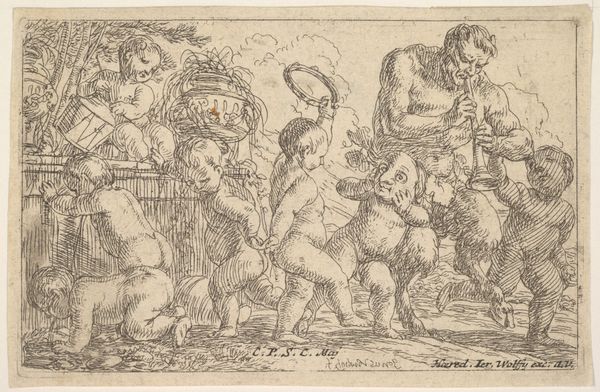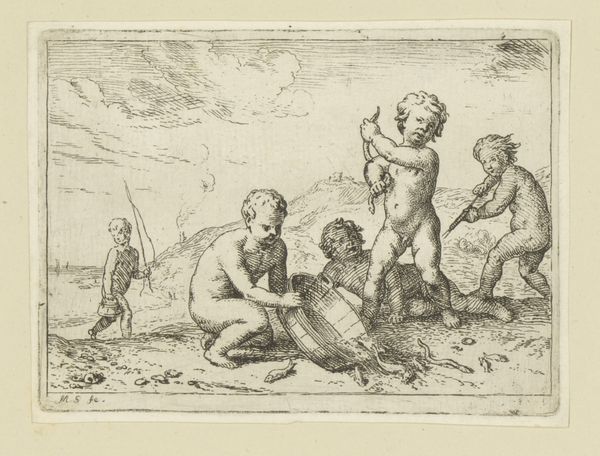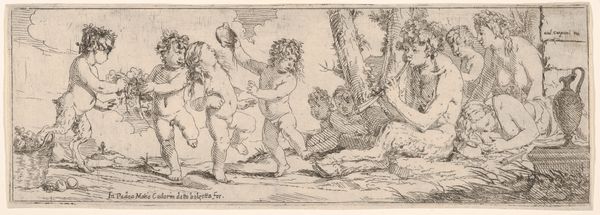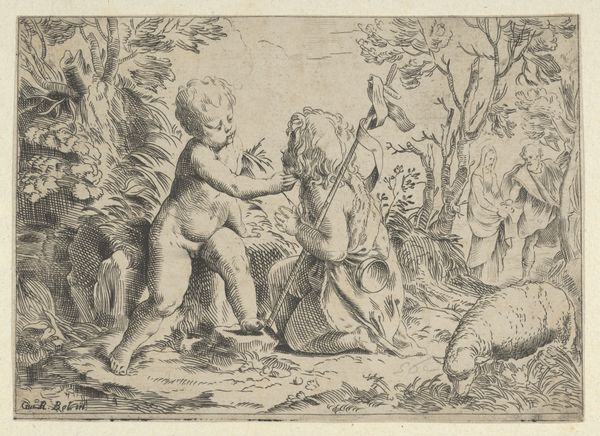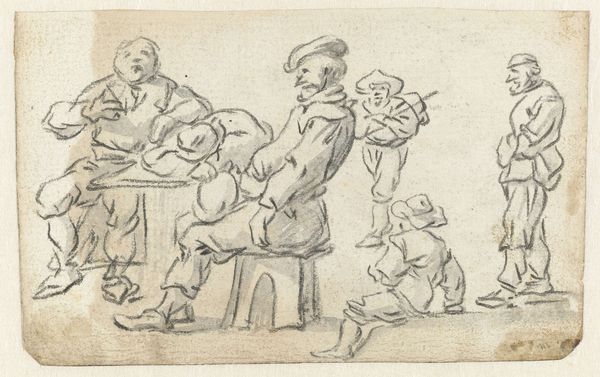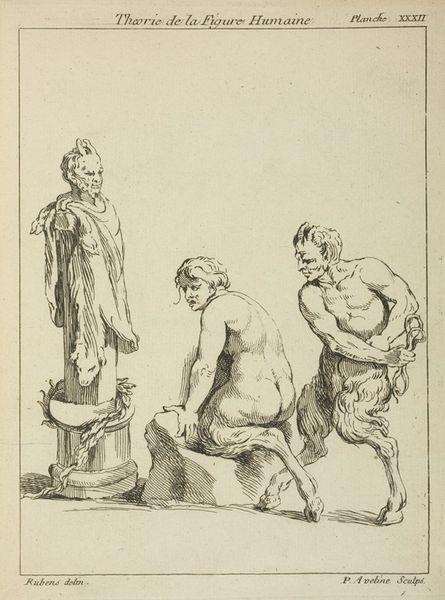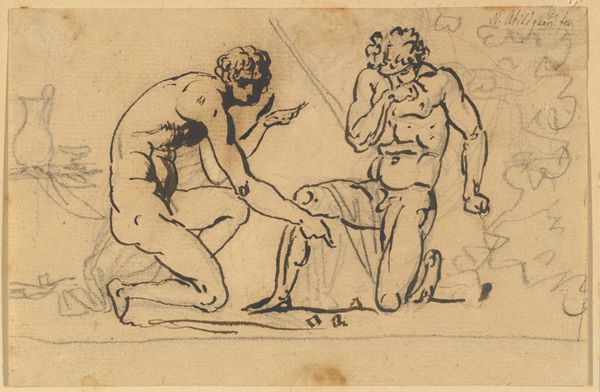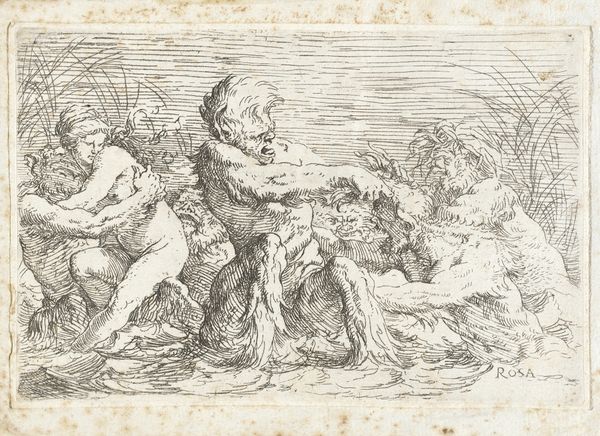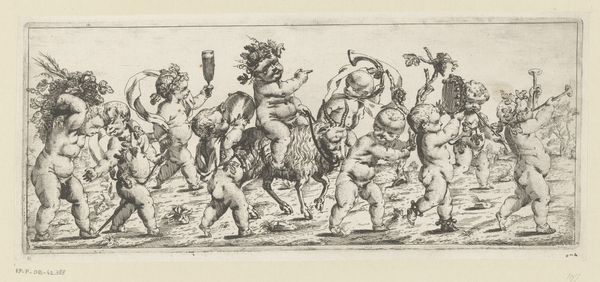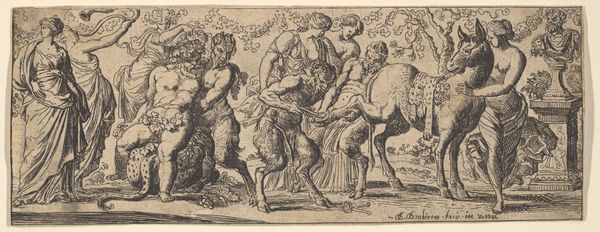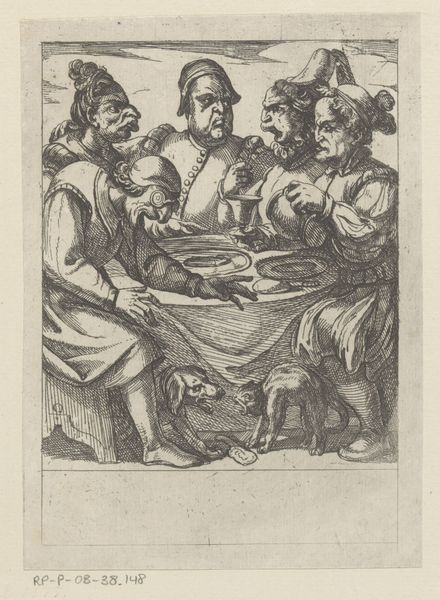
Plate 4: marine gods and other cavorting figures 1635 - 1645
0:00
0:00
drawing, print, etching, engraving
#
drawing
#
ink drawing
#
narrative-art
#
baroque
# print
#
etching
#
figuration
#
nude
#
engraving
Dimensions: Sheet: 4 9/16 × 18 1/16 in. (11.6 × 45.8 cm)
Copyright: Public Domain
Curator: This energetic etching, "Plate 4: marine gods and other cavorting figures" was created between 1635 and 1645 by Giulio Carpioni. Editor: My immediate impression is of pure Baroque exuberance! There’s a joyful abandon to these figures—they're really relishing their existence in the watery depths. Curator: Absolutely. Look at how Carpioni uses line to convey movement. It’s almost frenetic, isn't it? The waves, the billowing cloth, even the hair—it all suggests dynamic energy. In terms of symbolic language, water often represents the unconscious. This mythological scene becomes a depiction of human passions and drives bubbling to the surface. Editor: Precisely! I wonder, what political or social commentaries, if any, do you read into this imagery, or is it purely celebratory and decorative? How did contemporaries experience its exuberant depiction of pleasure? Was it liberating, decadent, or a bit of both? Curator: I agree, these are vital questions. It’s worth remembering the historical context: The Baroque era was heavily shaped by the Catholic Church and various courts. Artists needed to know how to play the game if they wanted to keep a commission. What resonates with me here is how it speaks to an unbroken link of humans imagining gods at play, beings with supernatural capabilities expressing exaggerated, theatrical human desires. Editor: True. And Carpioni does embrace the decorative opportunities afforded him by this subject. The bodies themselves, their exaggerated poses—all of it shows the body as an instrument, both of expression, and I think, of public negotiation in art. What’s your lasting impression? Curator: It solidifies my sense that we carry ancient mythologies forward, subconsciously informing new visual languages about the eternal questions we grapple with, generation after generation. Editor: I agree—it’s this layering of the ancient onto contemporary that keeps these figures, these stories, and even this single sheet of paper feeling very much alive.
Comments
No comments
Be the first to comment and join the conversation on the ultimate creative platform.

